This article was co-authored by Laura Marusinec, MD. Dr. Marusinec is a board certified Pediatrician at the Children's Hospital of Wisconsin, where she is on the Clinical Practice Council. She received her M.D. from the Medical College of Wisconsin School of Medicine in 1995 and completed her residency at the Medical College of Wisconsin in Pediatrics in 1998. She is a member of the American Medical Writers Association and the Society for Pediatric Urgent Care.
There are 21 references cited in this article, which can be found at the bottom of the page.
wikiHow marks an article as reader-approved once it receives enough positive feedback. In this case, several readers have written to tell us that this article was helpful to them, earning it our reader-approved status.
This article has been viewed 370,365 times.
Everyone will experience a cut now and then. Many cuts won’t require you to see a doctor, but to stay healthy and avoid infections, you should do all you can to ensure cuts heal as quickly and efficiently as possible.[1] Fortunately, there are a number of steps you can take to help cuts heal fast and allow you to go on with your life.
Steps
Cleaning and Dressing the Wound
-
1Wash your hands. Before caring for your wound, you'll need to make sure your hands are clean so you don't transfer bacteria into the cut. Make sure you go through the correct process of washing your hands to ensure they are as clean as possible.[2]
- Wet your hands with clean, running water.
- Apply soap and lather your hands by rubbing them together. Be sure to cover all parts of your hands, including the backs, between your fingers, and your fingernails.
- Scrub your hands for 20 seconds. Popular timekeeping tricks are humming the "Happy Birthday" song twice, or singing the ABC's.
- Rinse your hands under clean, running water. Make sure to avoid touching the faucet with your hands when you turn the water off, if you can. Use your forearm or elbow instead.
- Dry your hands with a clean, dry towel or allow them to air dry.
- If soap and water is unavailable, use hand sanitizer that is at least 60% alcohol. Apply the amount suggested by the label to your hands and rub them until they are dry.
-
2Stop the bleeding. If you're suffering from a minor cut or scrape, bleeding should be minimal and stop on its own. If not, you can elevate the wound and apply light pressure with a sterile bandage until the bleeding stops.[3]
- If the wound continues bleeding after 10 minutes, seek medical help. Your cut may be more serious than you originally thought.
- If the blood flow is profuse or spurting, you may have a severed artery. This is a medical emergency and you should go to the hospital or call emergency services immediately.[4] Common places for severed arteries are the inside of the thigh, the inside of the upper arm, and the neck.
- To perform first aid on a spurting cut while you wait for emergency services to arrive, apply a pressure bandage. Cover your wound with a rolling bandage or cloth and wrap it firmly around the wound. Don’t wrap so tightly that you cut off circulation, though. Seek medical help immediately.[5]
Advertisement -
3Clean the wound. To avoid infection, you'll have to remove as much debris and bacteria as possible. Do this before applying any kind of bandage to avoid trapping bacteria in the wound.[6]
- Rinse the wound under clean water. The running water should remove much of the debris that may be in the wound.
- Wash around the wound with soap. Avoid getting soap directly into the cut- this can cause irritation and inflammation.
- If debris remains in the wound after rinsing, use tweezers cleaned with alcohol to remove it.
- See your doctor if there is more dirt or debris that you can't get out.
-
4Apply an antibiotic cream or ointment. These products will help keep the wound free of infection and prevent complications that could hamper the healing process. Brands like Bacitracin, Neosporin, and Eucerin are easily available at drug stores in the first aid aisle.[7]
- Be sure to check the labels of these products before using them to ensure that you aren't allergic to any of the ingredients.
- If a rash or irritation occurs, stop use and contact your doctor.
- If you do not have antibacterial or antibiotic cream, apply a thin layer of petroleum jelly. This will help form a barrier between the wound and bacteria.
-
5Cover the wound. Leaving your cut uncovered will attract dirt and bacteria to it and could lead to infection. Use a sterile, nonstick bandage or band-aid to cover the cut. Make sure that the dressing you are using fully covers the wound.[8]
- If no bandages are readily available, you can cover the wound with a clean tissue or paper towel until you get a hold of a proper bandage.
- For very shallow cuts that are not bleeding heavily, you may use liquid skin bandage. This product helps seal the wound against infection and is usually water-resistant for several days. Apply this product directly to the skin after cleaning and drying the wound.
-
6Decide if you need medical help. Superficial cuts probably won't need medical attention unless you get an infection. There are a number of circumstances, however, where you should seek appropriate medical care after cleaning and dressing the wound. If any of the following applies to you or your wound, waste no time in getting to the doctor or hospital.[9]
- The cut is on a child less than one year old. Any cut on an infant less than a year old should receive medical attention to make sure no infection or scarring occurs.
- The wound is deep. A cut that goes 0.25” or more into the skin is considered a deep wound. In a very deep cut you may see fat, muscle, or bone exposed. These wounds will usually need stitches to heal properly and prevent infection.[10]
- The wound is long. A cut that is longer than 0.5” will likely need stitches.
- The wound is very dirty or has debris that you cannot remove. To prevent infection, you should seek medical attention if you cannot fully clean the wound.
- The wound is on a joint and gapes open when the joint is moved. This kind of wound will also require stitches to close properly.[11]
- The cut keeps bleeding after 10 minutes of direct pressure. This could signify that the cut has struck a vein or artery. You'll need medical attention to treat this wound..[12]
- The wound came from an animal. Unless you are aware of the animal's immunization history, there is a risk of rabies. The wound will need to be thoroughly cleaned and you may need a round of rabies shots to prevent the disease.[13]
- You have diabetes. Diabetics are prone to wound complications due to poor circulation and nerve performance. Small cuts can get seriously infected or take a long time to heal. If you are diabetic, you should always see a doctor if you receive a cut of any size.[14]
- It has been more than 5 years since your last tetanus shot. While doctors recommend tetanus shots every 10 years, boosters are often given if you receive a deep puncture wound, a laceration from an animal bite, or any cut from a rusty piece of metal. See your doctor if it's been more than 5 years since your last shot to decrease your risk of contracting tetanus.[15]
- The cut is on your face. Stitches or other treatments may be beneficial to help cosmetic healing.
Caring for the Wound While it Heals
-
1Change the bandage regularly. Blood and bacteria from your cut will soil the old bandage, and it needs to be changed at least once a day to avoid infection. Also change the bandage anytime it gets wet or dirty.[16]
-
2Watch for signs of infection. Even though cleaning your wound thoroughly and keeping it covered helps prevent infections, they can still occur. Keep an eye out for these signs and talk to your doctor if you have any of the following symptoms.[17]
- Increased pain around the area.
- Redness, swelling, or warmth around the cut.
- Drainage of pus from the wound.
- A foul smell.
- A fever of 100 degrees or more for over 4 hours.
-
3Visit your doctor if your wound isn't healing properly. Cuts usually take 3-7 days to heal, or up to 2 weeks for more serious wounds. If your wound is taking too long to heal, there may be an infection or some other problem. If a week has gone by and your wound doesn't seem to be healing, see your doctor.[18]
Helping Your Wound Heal Quickly
-
1Keep the area moist. Antibiotic ointment isn't only useful for preventing infections- it also helps lock moisture into the cut. This is beneficial because dry wounds heal more slowly, so moisture will expedite healing. Apply ointment every time you wrap the wound. Even when you've stopped covering the cut, apply a dab of ointment to lock in moisture and help the healing process.[19]
-
2Avoid picking at or removing scabs. Scabs sometimes form over cuts or scrapes. These help protect the area while it heals. Accordingly, you shouldn't pick at scabs or try to remove them. This will uncover the cut and your body will have to start healing itself all over again, slowing the healing process.[20]
- Scabs sometimes get rubbed off accidentally and the cut starts bleeding again. If this happens, clean and dress it like any other cut.
-
3Peel band-aids off slowly. While we're often told that ripping band-aids off quickly is best, this can actually make your wound heal slower. Pulling a band-aid off too fast can rip scabs and reopen wounds, setting back the healing process. Instead, peel the band-aid off slowly. To help make this easier, you can soak the area in warm water to loosen the band-aid and make removal less painful.[21]
-
4Avoid using harsh antiseptics on minor wounds. Alcohol, peroxide, iodine, and harsh soaps irritate and inflame the wound, which can slow the healing process and even cause scarring. For minor cuts and scrapes, all you need is clean water, mild soap, and antibiotic ointment.[22]
-
5Get plenty of sleep. The body repairs itself while sleeping. If you don't sleep enough, the wound can take much longer to heal. Sleep is also essential for a healthy immune system to prevent infections while your wound heals. Commit to getting a full night's sleep to help your wound heal quickly and efficiently.[23]
Helping Your Wound Heal with Proper Diet
-
1Eat 2 or 3 servings of protein daily. Protein is a necessary ingredient for skin and tissue growth. Eating 2 to 3 servings per day will stimulate wound healing. Some good sources of protein are:[24]
- Meats and poultry
- Beans
- Eggs
- Dairy products like milk, cheese, and yogurt, especially Greek yogurt
- Soy protein products
-
2Increase your fat intake. Fats are needed for the formation of cells, so you'll need plenty to make your wound heal quickly and efficiently. Make sure the fats you're getting are polyunsaturated and monounsaturated fats, or "good fats." Saturated fats from junk foods won't help you heal and can cause other health problems.[25]
- Sources of "good fats" that will help you heal are lean meats, vegetable oils such as sunflower or olive, and dairy products.
-
3Eat carbohydrates daily. Carbohydrates are important because your body uses them for energy. Without them, your body will break down nutrients like protein to get its energy. This can slow the healing process because protein and fats will be diverted from healing your wound. Prevent this by eating cereal, bread, rice, and pasta daily.[26]
- Go for complex carbohydrates over simple carbohydrates. Complex carbohydrates are digested more slowly by your body, meaning they are less likely to spike your blood sugar. Foods containing complex carbs, such as whole grain breads, cereals, and pastas, sweet potatoes, and whole oats, also generally contain more fiber and protein.[27]
-
4Get enough vitamin A and C. Both these vitamins help wounds heal by stimulating cell growth and fighting inflammation. They also fight infection while the cut is still healing.[28]
- Sources of vitamin A include sweet potatoes, spinach, carrots, herring, salmon, eggs, and dairy products.
- Sources of vitamin C include oranges, yellow peppers, dark green vegetables, and berries.
-
5Include zinc in your diet. Zinc helps synthesize proteins and develop collagen, helping your wounds heal. Eat red meats, fortified cereals, and shellfish to get enough zinc in your diet.[29]
-
6Stay hydrated. Keep your fluid intake up to help improve circulation, which bring essential nutrients to your wound. Water also helps your body flush out toxins, which will help prevent infection.[30]
Warnings
- Ask your doctor before making a dramatic dietary change. If you have any preexisting conditions or are on a prescribed diet, you could damage your body without medical guidance.⧼thumbs_response⧽
- Call emergency services or go to the emergency room if your cut does not stop bleeding after 10 minutes, it has debris in the wound that you cannot remove, or the wound is deep or long.[31]⧼thumbs_response⧽
References
- ↑ http://www.mayoclinic.org/first-aid/first-aid-cuts/basics/art-20056711
- ↑ http://www.cdc.gov/handwashing/when-how-handwashing.html
- ↑ http://www.mayoclinic.org/first-aid/first-aid-cuts/basics/art-20056711
- ↑ https://www.health.harvard.edu/staying-healthy/emergencies-and-first-aid-direct-pressure-to-stop-bleeding
- ↑ https://www.urmc.rochester.edu/encyclopedia/content.aspx?contenttypeid=1&contentid=2978
- ↑ http://www.mayoclinic.org/first-aid/first-aid-cuts/basics/art-20056711
- ↑ https://www.aad.org/public/everyday-care/injured-skin/burns/wound-care-minimize-scars
- ↑ https://www.aad.org/public/everyday-care/injured-skin/burns/wound-care-minimize-scars
- ↑ https://www.urmc.rochester.edu/encyclopedia/content.aspx?contenttypeid=1&contentid=2978
- ↑ http://www.webmd.com/first-aid/tc/cuts-when-stitches-are-needed-topic-overview
- ↑ http://www.webmd.com/first-aid/tc/cuts-when-stitches-are-needed-topic-overview
- ↑ http://www.webmd.com/first-aid/tc/cuts-when-stitches-are-needed-topic-overview
- ↑ http://www.mayoclinic.org/first-aid/first-aid-animal-bites/basics/art-20056591
- ↑ http://www.webmd.com/a-to-z-guides/wound-care-10/diabetic-wounds
- ↑ https://www.uofmhealth.org/health-library/sig3065
- ↑ http://www.mayoclinic.org/first-aid/first-aid-cuts/basics/art-20056711
- ↑ https://www.nhs.uk/conditions/cuts-and-grazes/
- ↑ http://www.webmd.com/first-aid/tc/how-a-scrape-heals-topic-overview
- ↑ https://www.aad.org/public/everyday-care/injured-skin/burns/wound-care-minimize-scars
- ↑ https://medlineplus.gov/ency/patientinstructions/000741.htm
- ↑ https://www.webmd.com/first-aid/ss/slideshow-wound-care-dos-and-donts
- ↑ https://medlineplus.gov/ency/patientinstructions/000741.htm
- ↑ http://www.nlm.nih.gov/medlineplus/ency/patientinstructions/000741.htm
- ↑ https://www.uofmhealth.org/health-library/abs1199
- ↑ https://pubmed.ncbi.nlm.nih.gov/12070399/
- ↑ https://www.ncbi.nlm.nih.gov/pmc/articles/PMC6429075/
- ↑ http://www.nlm.nih.gov/medlineplus/ency/imagepages/19529.htm
- ↑ https://my.clevelandclinic.org/health/articles/11111-nutrition-guidelines-to-improve-wound-healing
- ↑ https://my.clevelandclinic.org/health/articles/11111-nutrition-guidelines-to-improve-wound-healing
- ↑ https://www.eatright.org/health/wellness/preventing-illness/nutrition-tips-to-promote-wound-healing
- ↑ http://www.nlm.nih.gov/medlineplus/ency/patientinstructions/000593.htm
About This Article
To make cuts heal faster, start by washing your hands with soap and water to avoid transferring bacteria into the skin. If the cut is still bleeding, apply light pressure to the wound with a sterile bandage, and keep it elevated until the bleeding stops. Then, clean the wound by rinsing it under running water and using tweezers to remove any remaining debris. After you clean the wound, apply an antibiotic cream and cover it with a sterile, nonstick bandage. For more tips from our Medical co-author, including how to watch for signs of infection, keep reading!
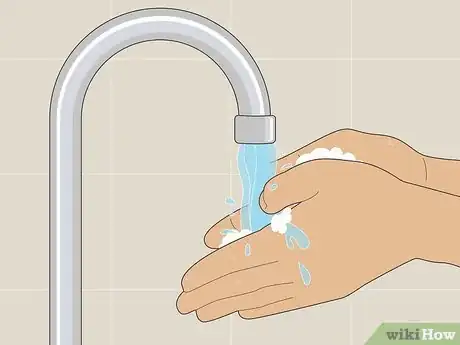
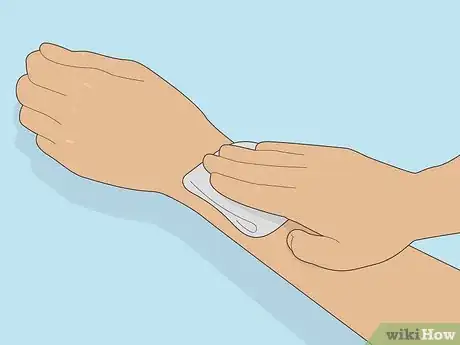
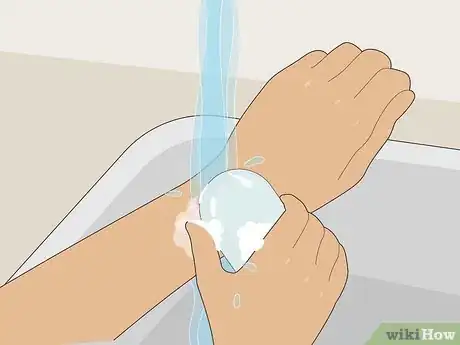
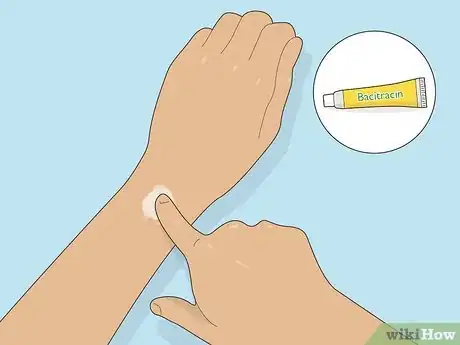
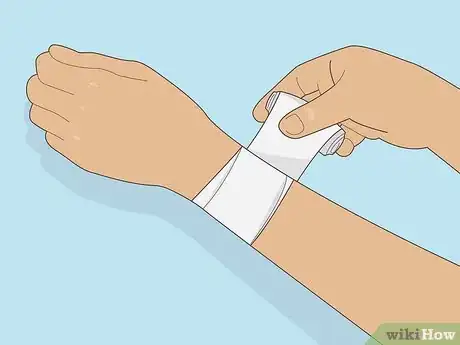
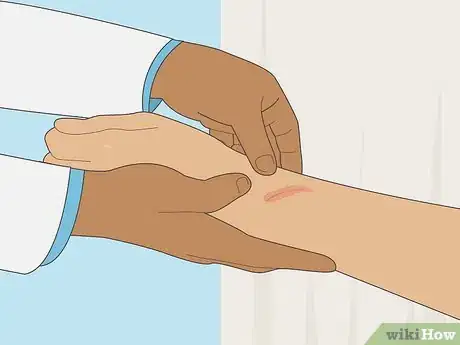
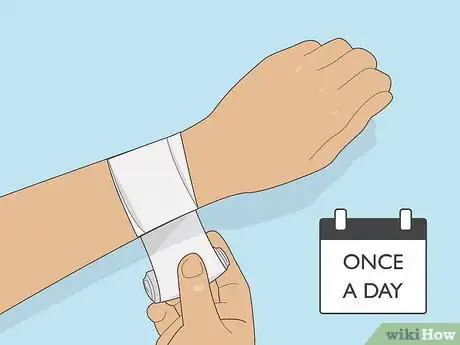
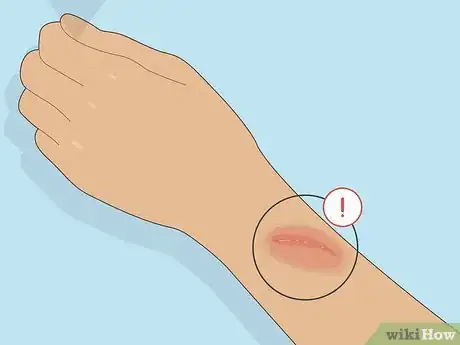
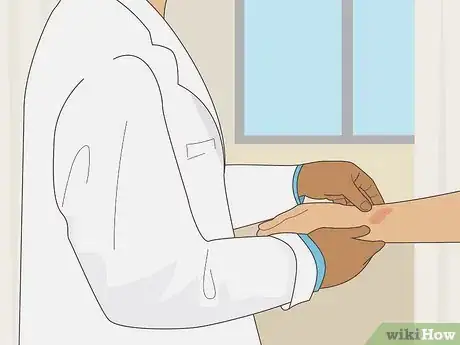
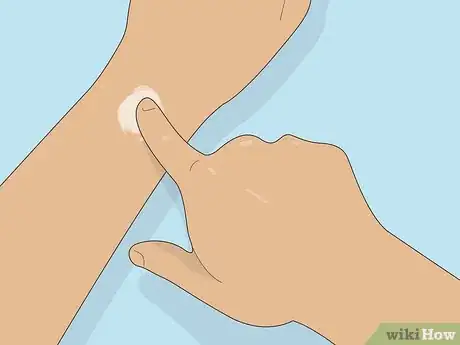
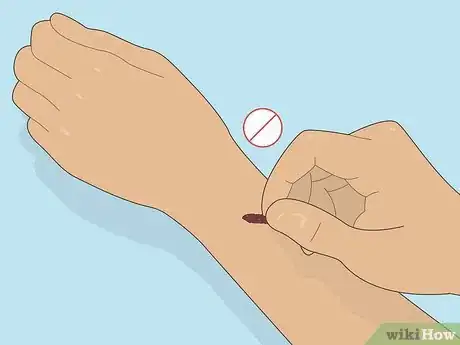
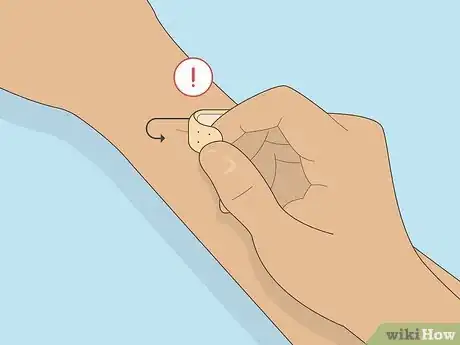
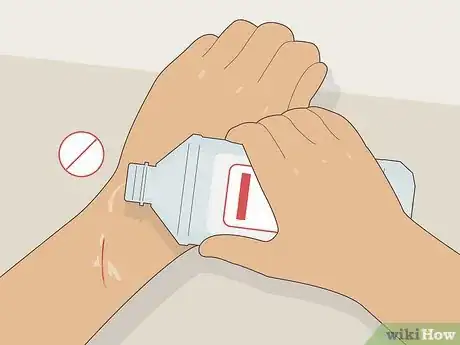
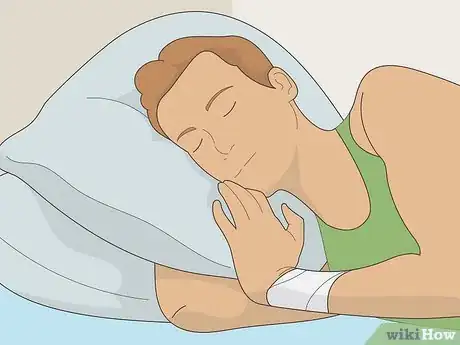
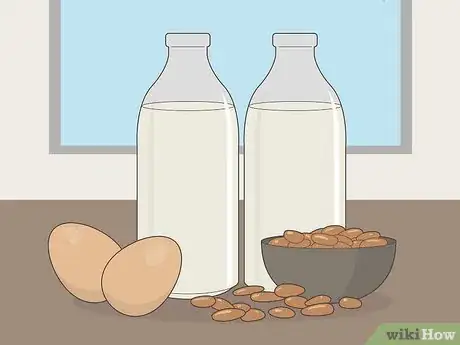
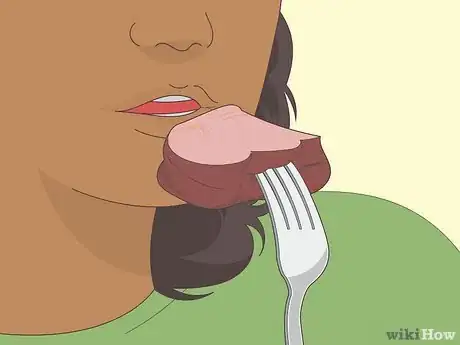
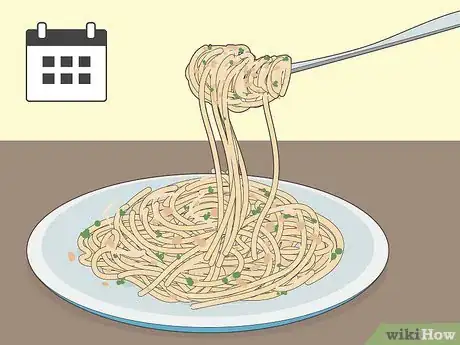

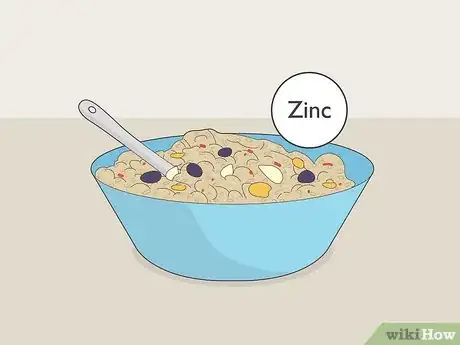
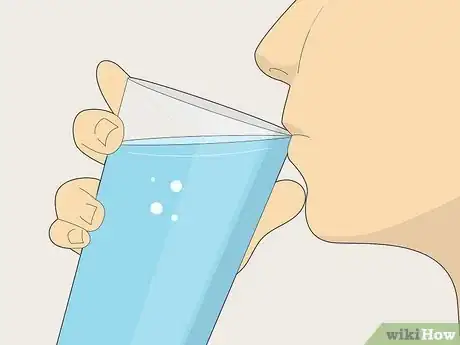
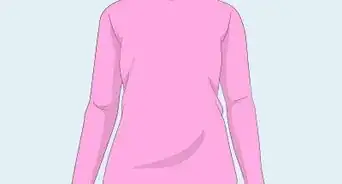
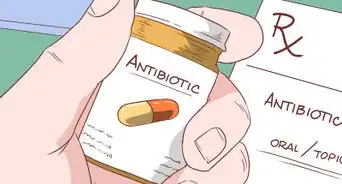

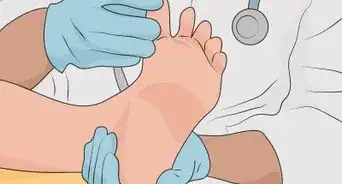
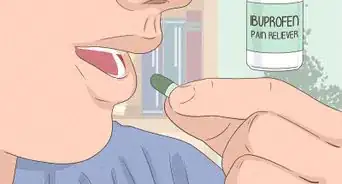
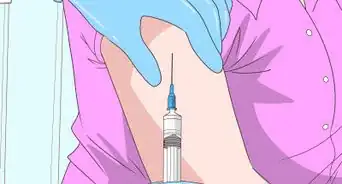
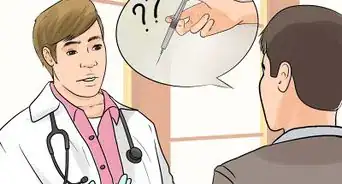
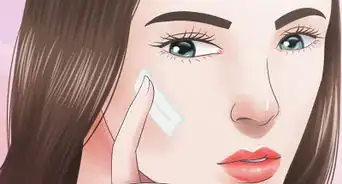
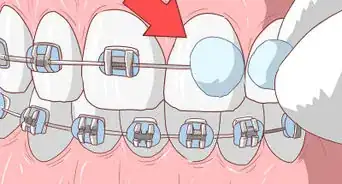
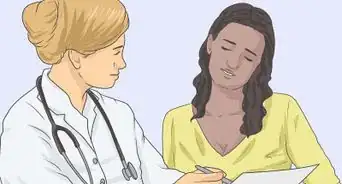
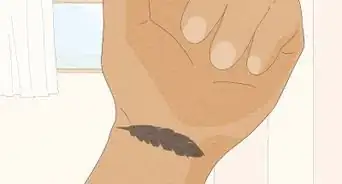

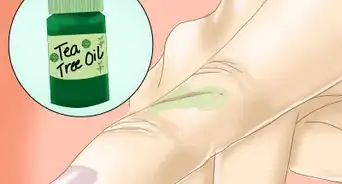












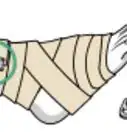
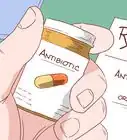
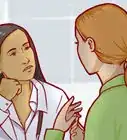



































Medical Disclaimer
The content of this article is not intended to be a substitute for professional medical advice, examination, diagnosis, or treatment. You should always contact your doctor or other qualified healthcare professional before starting, changing, or stopping any kind of health treatment.
Read More...